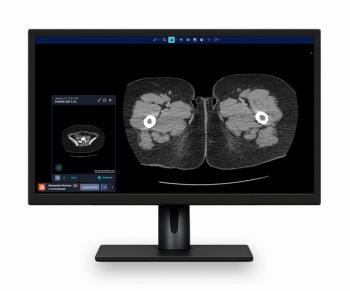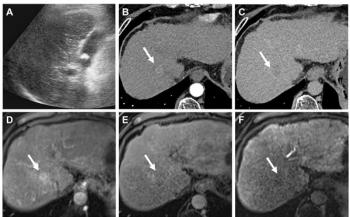
Assessing the Benefits of Mobile X-Ray Imaging
As imaging volume continues to escalate for radiologists, more and more health-care facilities are turning to mobile imaging for increased efficiencies and benefits for patient care.
Mobile imaging has a variety of benefits for patient care. For example, consider the challenges of transporting critically ill patients for imaging. Possible complications of such transport can range from respiratory complications and loss of intravenous access) to traumatic injuries and infection.1 Bringing diagnostic imaging technology directly to the bedside eliminates the risks of patient transport. It also eliminates the need for transport staff, freeing them up to tend to other patients in the facility.
Eliminating transportation can also promote healing of the patient being imaged as well as other patients within the area. How? Consider the elimination of the noise and activity associated with having hospital staff prepare a patient for transfer, and the recurrence of that commotion when returning a patient to his or her room. Studies show that a quiet environment promotes sleep and rest, thus helping patients heal more quickly. Less noise could mean fewer spikes in heart rate, blood pressure, cortisol output and general anxiety. This holds true for nurses and other hospital staff as well.2
To help promote rest, Carestream redesigned the
Emphasizing Improvements to Mitigate Infection Risk
Infection control is always of concern within the health-care environment, and even more so today with the emergence of COVID-19. Imaging patients at their bedside can help reduce the spread of contagions that could occur during patient transportation.
The display screen on DRX-Revolution is flush-mounted, which helps protect against fluid ingress. The exterior of the mobile systems can be disinfected thoroughly and is ready to use again minutes after cleaning. In contrast, some imaging rooms require up to 45 minutes between exams due to mandated air exchanges.3
Facilitating a Faster Diagnosis
Another driver for the increase in mobile imaging is its role in providing a quick diagnosis. A portable X-ray unit enables image capture at a patient’s bedside in much less time than it would take to transport a patient to an X-ray room. Images can be viewed by a physician immediately on the unit’s console or in the PACS.
This feature is beneficial to a larger part of the patient population beyond critically ill patients in the intensive care unit (ICU). For example, trauma patients with life-threatening injuries can be imaged right at the bedside rather instead of risking the complications of transport. Even patients with non-life-threatening injuries, such as broken bones, can be imaged at their bedside in the emergency room (ER).
Several of our customers utilize the DRX-Revolution during surgical procedures. Surgeons can immediately view images to assist in determining and documenting the alignment of fractures, placement of hardware, spinal level localization, presence of a foreign body, etc.
In all cases, faster radiology studies and quicker diagnoses can help treatment and healing begin sooner.
Streamlining Workflow
Completing examinations at the bedside also can help increase patient throughput. I have been a radiologic technologist for more than 20 years so I understand the need to balance the time it takes to properly capture an image with the need for increased throughput. I am really pleased with the enhanced workflow features on our Carestream mobile solutions that help streamline image capture.
For example, on the DRX-Revolution, the collimator knobsare now on both sides of the tube head, making them easily accessible in any situation and position. This is extremely helpful in tight and cluttered situations, such as the ICU and ER.
Our ImageView software minimizes screen transitions, so technologists have all the controls they require on a single screen. This makes setting up and completing examinations much quicker and efficient. Additionally, there is the ability to access the hospital information system (HIS)/radiology information system (RIS)directly from the desktop, allowing technologists to start and end patient exams without having to go to a second workstation.
The redesigned bin on the DRX-Revolution provides the ability to charge the detector, ensuring there is always a detector ready for use. And lastly, functional lighting helps alert users, both in and out of the room, of the status of the system.
All these features help the technologist complete the examination more efficiently, allowing him or her to focus more on the patient. This can improve satisfaction with the experience for both parties.
These strong benefits of mobile imaging will continue to increase its use for diagnostic radiology (DR) imaging. When quality images can be captured at the bedside, this can lead to increased patient comfort, reduced infection risk, less complications, and hopefully improved outcomes.
References
1. Knight PH, Maheshwari N, Hussain J, et al. Complications during intrahospital transport of critically ill patients: focus on risk identification and prevention. Int J Crit Illn Inj Sci. 2015;5(4):256-264.
2. Romero MR, Brock M. HUSH initiative: a noise reduction project. Presented at 7th Annual Nurses Association’s Nursing Quality Conference, Atlanta, February 2013. Available at: https://www.researchgate.net/publication/267343280_HUSH_Initiative_A_Noise_Reduction_Project . Accessed May 26, 2022.
3. Algee B. Imaging innovation on the move: bedside imaging during COVID-19. Available at: https://www.youtube.com/watch?v=hU1G8Xa0Ejs . Published October 21, 2020. Accessed May 26, 2022.
Editor’s note: This article was adapted with permission from its original publication on Carestream’s Everything Rad blog at
Newsletter
Stay at the forefront of radiology with the Diagnostic Imaging newsletter, delivering the latest news, clinical insights, and imaging advancements for today’s radiologists.




























